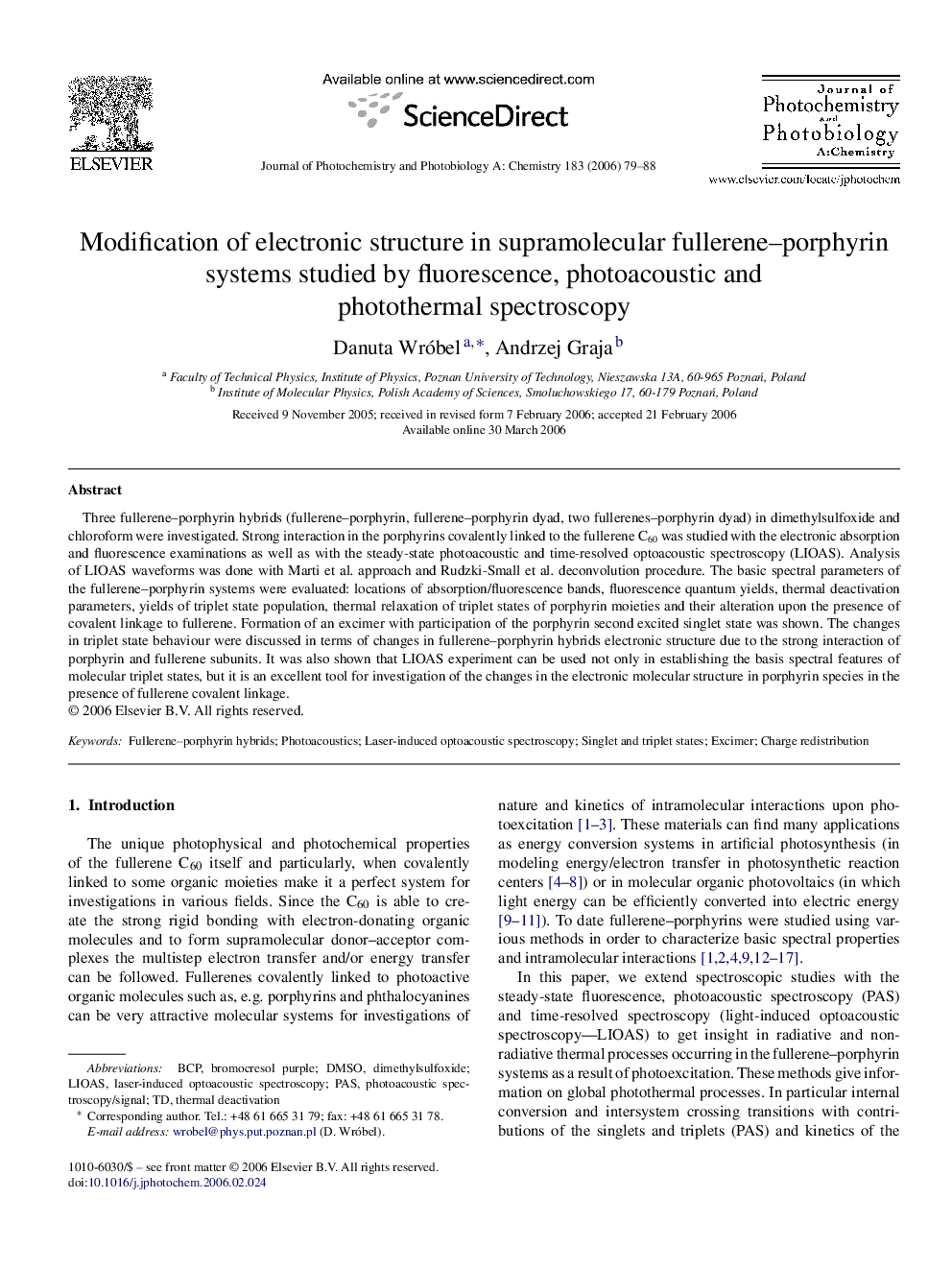| Article ID | Journal | Published Year | Pages | File Type |
|---|---|---|---|---|
| 28441 | Journal of Photochemistry and Photobiology A: Chemistry | 2006 | 10 Pages |
Three fullerene–porphyrin hybrids (fullerene–porphyrin, fullerene–porphyrin dyad, two fullerenes–porphyrin dyad) in dimethylsulfoxide and chloroform were investigated. Strong interaction in the porphyrins covalently linked to the fullerene C60 was studied with the electronic absorption and fluorescence examinations as well as with the steady-state photoacoustic and time-resolved optoacoustic spectroscopy (LIOAS). Analysis of LIOAS waveforms was done with Marti et al. approach and Rudzki-Small et al. deconvolution procedure. The basic spectral parameters of the fullerene–porphyrin systems were evaluated: locations of absorption/fluorescence bands, fluorescence quantum yields, thermal deactivation parameters, yields of triplet state population, thermal relaxation of triplet states of porphyrin moieties and their alteration upon the presence of covalent linkage to fullerene. Formation of an excimer with participation of the porphyrin second excited singlet state was shown. The changes in triplet state behaviour were discussed in terms of changes in fullerene–porphyrin hybrids electronic structure due to the strong interaction of porphyrin and fullerene subunits. It was also shown that LIOAS experiment can be used not only in establishing the basis spectral features of molecular triplet states, but it is an excellent tool for investigation of the changes in the electronic molecular structure in porphyrin species in the presence of fullerene covalent linkage.
